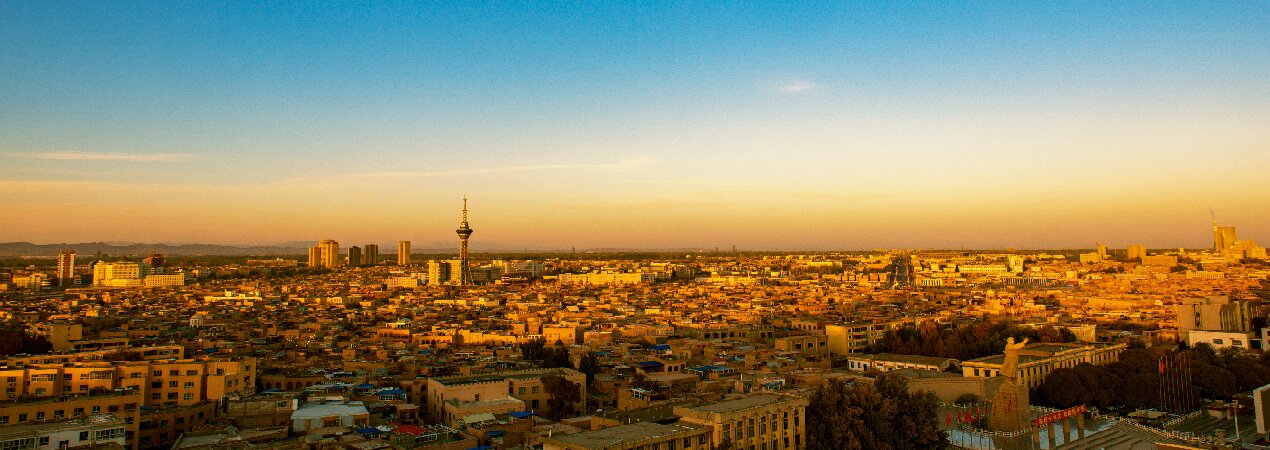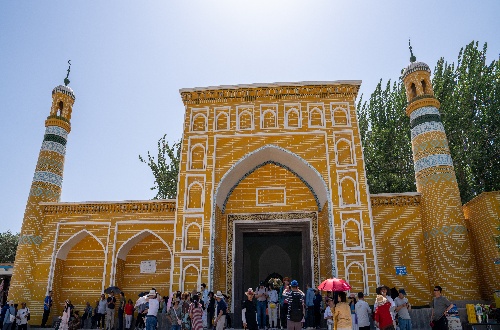Kashgar Ancient City

The Kashgar Ancient City is located in the heart of Kashgar. Boasting a long history, rich culture, and unique customs, the ancient city features traditional dwellings with a history of over a hundred years. It stands as the best-preserved labyrinthine urban block in China with typical architectural styles of the ancient Western Regions. As an open-access tourist attraction, the modern Kashgar Ancient City vividly showcases the family life, ethnic customs, traditional handicrafts, and flavorful cuisine of the Uyghur people.
- Chinese name: 喀什古城 Kāshí Gǔchéng
- Suggested time: 1 - 2 days
- Ticket: Free
- Open hours: The ancient city is open 24 hours a day. But note that some specific attractions or activity times may vary.
- The best time to visit: All year around
- Address: In the center of Kashgar City, Xinjiang Uygur Autonomous Region. It is bounded by Renmin Road in the south, Seman Road and Yawage Road in the north, Yumulakexiehaier Road in the west, and Tuman River Scenic Belt in the east.
- How to get there: It is recommended to travel by self-driving, which will be more convenient.
Highlights of Kashgar Ancient City
Id Kah Mosque
 Id Kah Mosque
Id Kah MosqueFounded in the 7th year of the Zhengtong reign of the Ming Dynasty (1442), it is an ancient architectural complex with rich ethnic styles and strong religious features. Composed mainly of functional structures like the gatehouse, prayer hall, minaret, courtyard, and ablution room, it covers a total area of 16,800 square meters. As one of the largest mosques in China, it boasts magnificent architecture. The grand scenes of five daily prayers here allow you to witness the profound religious atmosphere.
Gaotai Residential Area
Located at the northeast end of Kashgar's old city, the dwellings here are built along the loess cliffs, with houses stacked and connected in layers. Between the buildings, crisscrossing alleys form a vast labyrinth, where visitors often lose their way. Hailed as the "Living Folklore Museum of Kashgar Ancient City" by domestic and international tourists, this area was home to over 600 households more than 800 years ago. After generations of settlement, it has become a unique original historical neighborhood with ecological features, featuring intangible cultural heritage workshops (such as pottery studios) and modern trendy stores (like cafes and photo studios) open to the public.
Geng Gong Temple
Located at the northeast corner of Kashgar Ancient City, Geng Gong Temple was constructed in the 6th year of the Guangxu reign of the Qing Dynasty (1880) to commemorate Geng Gong, a garrison commander of the Western Regions in the Eastern Han Dynasty. The two iconic red wooden structures feature overhanging eaves and pavilions, showcasing distinct Central Plains cultural characteristics. Built in memory of the renowned Eastern Han general Geng Gong, these buildings stand out prominently among the surrounding residential complexes with typical Western Regions cultural features.
Featured Alleys
 Featured Alleys
Featured AlleysArya Road, stretching 600 meters, consists of five bazaars: Flower Pot Bazaar, Kantuman Bazaar, Woodworking Bazaar, Uyghur Traditional Medicine Bazaar, and Doppa Bazaar. Another featured street, Kumdarwaza Road—also known as Handicraft Street or Craftsmen Street—houses workshops such as Uyghur folk musical instrument craftsman families, Kashgar's largest bronze ware craftsman family, traditional thin-wood steamer workshops, wood lathe turning studios, and cotton floss refurbishing workshops. Along the road, visitors can admire the exquisite Uyghur brick carving craftsmanship. Intangible cultural heritage skills, including terracotta firing techniques, Uyghur architectural decoration craftsmanship, and ethnic musical instrument making, can all be witnessed in the ancient city.
Educational Value
Gaotai Residential Area is a typical adobe architectural complex, with houses built along cliffs and a unique layout. You can wander through it, study its architectural structure and spatial layout, analyze how adobe buildings adapt to the local natural environment, and appreciate the architectural wisdom of the Uyghur people.
Activities to do at Kashgar Ancient City
Experience Terracotta Making: In terracotta workshops, follow craftsmen to learn and make terracotta by hand, going through the entire process from kneading clay and pulling blanks to shaping, and feel the charm of traditional handicrafts.
Make Uyghur Medicinal Sachets: Learn from intangible cultural heritage inheritors to make Uyghur medicinal sachets, study the knowledge and efficacy of herbs in Uyghur medical culture, and customize sachets with different effects according to formulas.
Drop us a line and we'll connect you with the top China expert in no time!